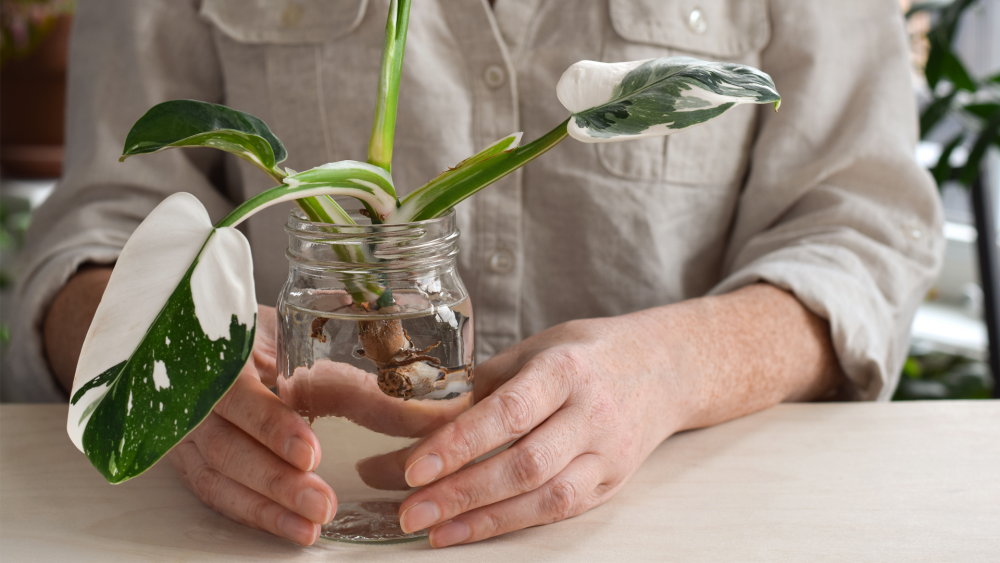
Philodendron White Wizard is a stunning and unique houseplant that features striking white and green marbled leaves. With its dramatic foliage and ease of care, it has quickly become a favorite among plant enthusiasts. This tropical beauty adds an elegant touch to any room, but like all plants, it has specific care needs to thrive. Here's a comprehensive guide on how to care for your Philodendron White Wizard.
Philodendron White Wizard thrives in bright, indirect light. While it can tolerate lower light conditions, its variegated leaves will lose some of their striking white coloration in dimmer areas. Ideally, place your plant near a window with filtered light or in a spot where it receives indirect sunlight for most of the day. Avoid direct sunlight, as it can scorch your plants delicate leaves, causing them to turn brown or yellow.
If your space has limited natural light, consider supplementing with a grow light to provide the necessary brightness for healthy growth.
When it comes to watering, Philodendron White Wizard prefers to be kept slightly moist, but not soggy. Water your plant when the top 1-2 inches of soil feel dry to the touch. It’s essential to allow the water to drain freely from the bottom of the pot to prevent root rot.
During its growing season (spring and summer), you may need to water the plant more frequently, as it is actively growing. In the fall and winter, reduce watering, as the plant’s growth slows down and the soil retains moisture for longer periods.
Always check the moisture level of the soil before watering to ensure you're not overwatering, which can lead to root rot.
Philodendron White Wizard prefers warm, humid conditions. It thrives in temperatures between 65°F and 80°F (18°C to 27°C), making it ideal for indoor environments. Keep your plant away from cold drafts, air conditioners, or heaters, as extreme temperature fluctuations can stress the plant.
This Philodendron also enjoys higher humidity levels, ideally around 60% or more. If your home has dryer air, especially during the winter months, consider using a humidifier or placing the plant on a humidity tray filled with water and pebbles to maintain the necessary moisture. Regular misting can also help increase humidity, but avoid over-wetting the leaves to prevent fungal issues.
Philodendron White Wizard prefers well-draining, airy soil. A mix designed for tropical plants, such as a combination of peat, perlite, and orchid bark, will provide the right balance of moisture retention and drainage. The soil should remain consistently moist but never waterlogged.
When repotting, choose a pot that is 1 to 2 inches larger in diameter than the current one. Ensure the pot has drainage holes to allow excess water to drain and prevent root rot. Repot the plant every 1-2 years or when it becomes root-bound, typically in the spring.
During its growing season (spring and summer), you can fertilize your Philodendron White Wizard every 4-6 weeks with a balanced, water-soluble fertilizer diluted to half strength. This will encourage healthy growth and vibrant variegation in the leaves.
In the fall and winter, when the plant’s growth slows down, you can reduce or stop fertilizing altogether. Over-fertilizing can lead to nutrient burn, so always follow the recommended dosage on the fertilizer label.
Philodendron White Wizard is a low-maintenance plant, but occasional pruning can help keep it looking tidy and encourage new growth. If the plant becomes too leggy or develops long vines, you can trim it back to encourage bushier growth. Use clean, sharp scissors or pruning shears to cut just above a node (the point where leaves and stems emerge).
You can propagate your Philodendron White Wizard by taking stem cuttings. Simply cut a healthy stem with at least one node, place the cutting in water or moist soil, and wait for roots to develop. Once the roots are established, you can transplant the cutting into its own pot.
No, Philodendron White Wizard is not pet safe. Like many other Philodendrons, it contains calcium oxalate crystals, which can be toxic to pets if ingested. Ingesting any part of the plant can cause irritation to the mouth, throat, and digestive system in cats, dogs, and other animals. If you have pets, it’s best to keep the plant out of their reach to prevent accidental ingestion.